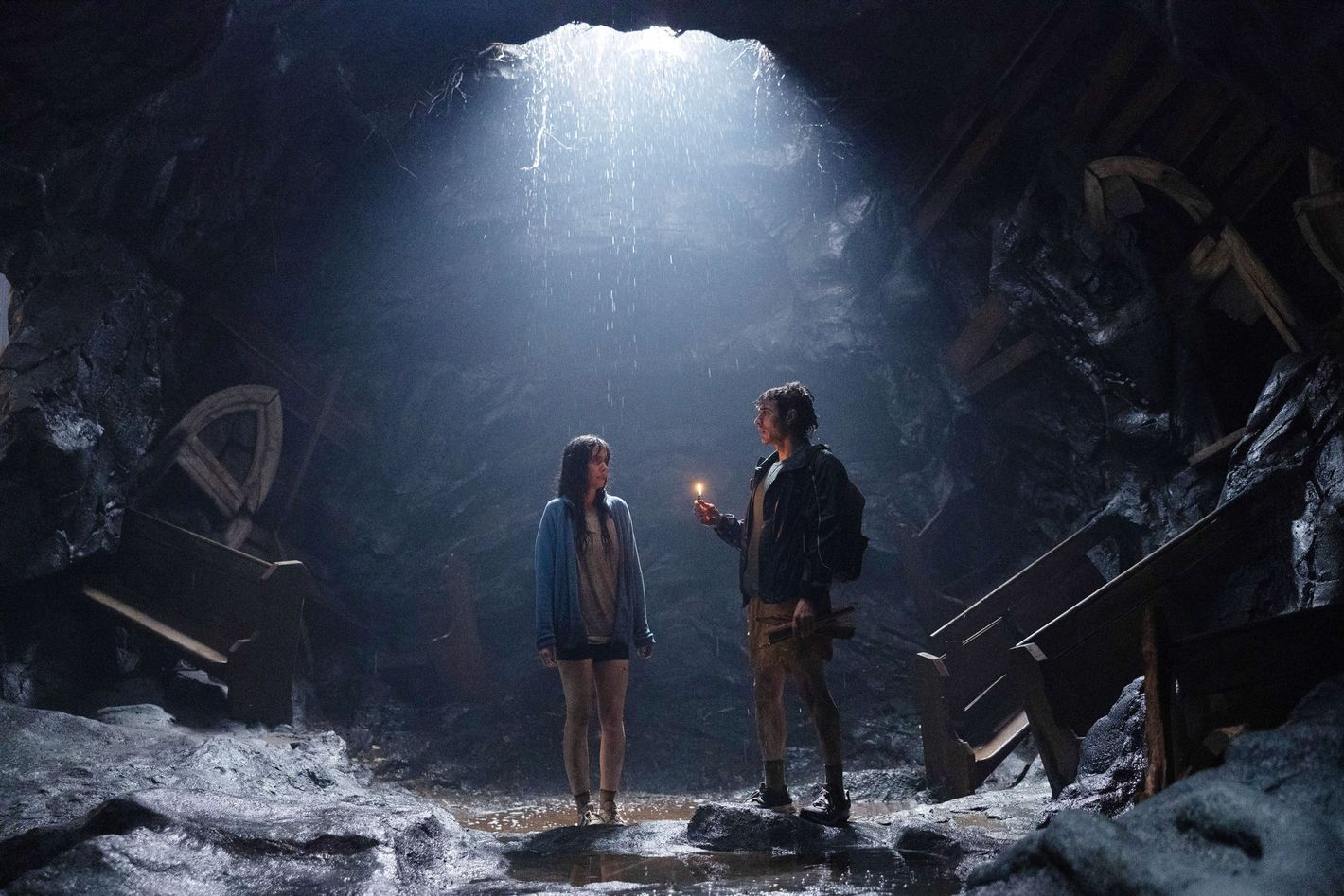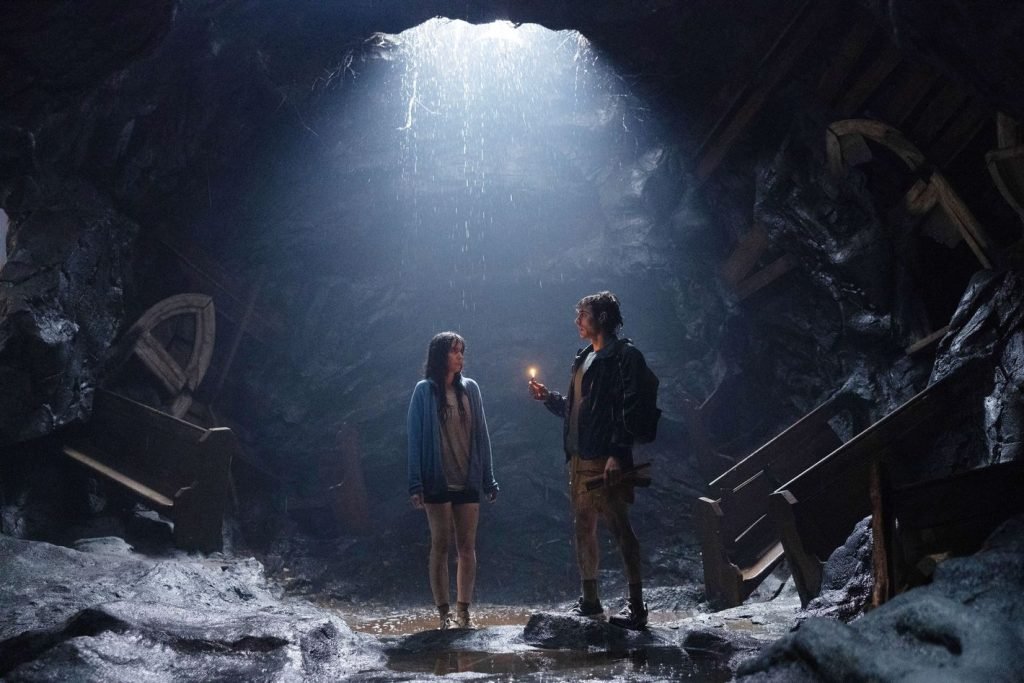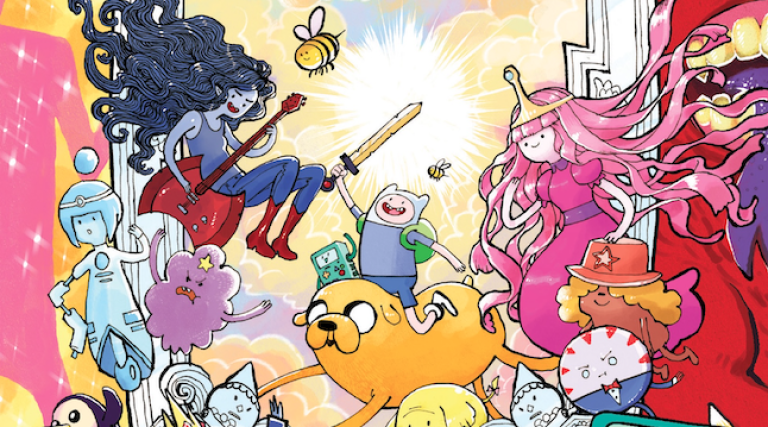
Spoilers ahead for the plot and ending of Together.
There’s always going to be a perverse thrill to seeing real-life couples perform a relationship onscreen — better yet when that fictional iteration is mired in dysfunction. Watching Together, Michael Shanks’s body-horror comedy starring married couple Alison Brie and Dave Franco, you might think of Tom Cruise and Nicole Kidman in Eyes Wide Shut or Elizabeth Taylor and Richard Burton in Who’s Afraid of Virginia Woolf? Those films, like this one, don’t depict wedded bliss or even settled domesticity so much as a deep rot at the core of their marriages. In Together, the cracks start off a little smaller, with Brie’s Millie and Franco’s Tim grounded in the ordinary strife that comes from any long-term union. As the film descends into the supernatural, however, the darkness comes into clearer focus, culminating in an ending that’s somehow more disturbing than Together’s predecessors — even if it leaves the audience laughing.
Millie and Tim are not married, one point of contention between them. They’re also not having sex, which is either a symptom of their distance or part of the cause. When we meet them, they’re having a going-away party before relocating to the country for Millie’s new teaching job, a move that will stall Tim’s musical ambitions in the process. All of this is a source of resentment, whether spoken or repressed. “When I die, I don’t want someone else’s life flashing before my eyes,” Tim’s bandmate needles him. While all relationships require compromise, Tim is clearly struggling with the control Millie seems to have over their collective future. It doesn’t help that he’s haunted by a traumatic event from his past — after his father died suddenly, his mother had a psychotic break, and he discovered her in bed next to her husband’s rotting corpse. She had lost herself so fully in the relationship that she couldn’t function without him, becoming detached enough from reality that she didn’t notice the smell of decomposition or even that Tim’s father was dead. It’s one of the more extreme examples of codependency and mental illness imaginable, but for a guy who feels trapped in a relationship where he’s lost his independence, it’s a useful metaphor.
But an even more potent metaphor is on the horizon as Millie and Tim go for a hike near their new home and end up temporarily trapped in an underground cave. Tim drinks from a pool of water (never a great idea), after which he starts exhibiting strange symptoms. He can’t seem to be physically apart from Millie, finding himself drawn to her even as the buried tension of their relationship rises to the surface. “If you think I’ve trapped you, why don’t you fucking leave?” Millie demands in a heated moment. “I can’t,” Tim answers, and that turns out to be true. When he tries to travel back to the city for a gig, he’s unable to get on the train, instead finding himself pulled zombielike to Millie’s school. They end up having ill-advised sex in a bathroom stall, then discover with considerable horror that their genitals are stuck together. (The quick shot we get of their interlocked organs may be Together’s most cringe-inducing image.) Though they’re eventually able to rip themselves apart, Tim’s condition is contagious. When the pair later try to sleep in separate bedrooms, they wake to find that their bodies are being pulled like magnets toward each other until their arms fuse together into a mass of skin and bone. “If we don’t split now, it’ll be much harder later,” Millie reasons before cutting through the connective tissue with an electric saw.
But the transformation Tim and Millie are enduring isn’t just a metaphor — we eventually get something resembling an explanation. The cave they fell into was a buried temple for a religious sect (read: cult) driven by Aristophanes’ origin of love myth, as outlined in Plato’s Symposium and also the song from Hedwig and the Angry Inch. We were once all completely round with two faces and two sets of arms and legs on each side. Zeus cut us into two, and now we spend our lives looking for our lost other half. When we find each other, we are drawn together by something that goes beyond simple attraction, a genuine desire to be formed back into one whole. It’s a beautiful story (particularly when Hedwig sings it), but there’s a real horror in seeing it literalized. Nevertheless, that is what this seemingly lost cult aspired to, and they used the water to fuse with their chosen partners. In the film’s third act, Millie discovers that friendly fellow teacher Jamie (Damon Herriman) is actually an adherent of the sect — he is, in fact, the amalgamation of the man he referred to as his husband, with both of them living in the same body. He slices a deep gash in Millie’s arm, telling her it will speed up the joining process that she can no longer fight.
When Millie returns to Tim, he’s ready to die for her, the only way he knows to stop their bodies from merging together. She’s the one at death’s door, though, having lost enough blood that it looks like she’s not going to make it. Millie loses consciousness, and when she comes to, Tim has let their arms meld into one again. “I was trying to let you go,” she says. But he has chosen an alternate path, one in which they’ll never be parted. As they listen to the Spice Girls’ “2 Become 1” — the most expertly deployed needle drop in recent memory — Tim and Millie get naked and press their bodies together. We see their lips, skin, and even eyeballs meet and merge. It’s gross and also a little romantic. The music swells, the very real chemistry between Brie and Franco sizzles, and we get to see Tim and Millie arrive on the same page at last. Faced with losing each other, they have abandoned any lingering doubts and commitment issues to form a union that can quite literally never be broken. And yet! The more you sit with the choice they make, the less aspirational it seems. What first appears to be the closest thing Together could have to a happy ending reveals itself to be something much darker — the nightmarish end point of a relationship so codependent that both parties have given up their autonomy completely.
That reading is underlined in the film’s last scene. Millie’s parents show up for a visit and are greeted by an androgynous stranger at the door — let’s call them Timillie. This is what the two have become, a version of themselves that looks a little like what would happen if Conan O’Brien’s “If They Mated” segment had gotten to Alison Brie and Dave Franco. It’s a punch line of a final image, and the movie ends before we have to deal with the ensuing confusion and distress from the parents. But even as it’s played for laughs, there’s an underlying melancholy to Together’s final beat. Whatever independence and selfhood Tim and Millie once had has been destroyed. Their lives are no longer their own. As Aristophanes tells it, those of us who find our other halves would leap at the opportunity for Hephaestus, the god of blacksmiths, to weld us back into one. Together challenges the romance of that notion. Of course there is beauty to becoming a “we”; there’s also a danger in letting the “we” subsume you to the extent that you lose yourself entirely. This is the warning at the heart of the film, a movie in which two people finding their way back to each other ends up being a kind of death. Yes, Millie and Tim are whole, but at what cost?
Related


